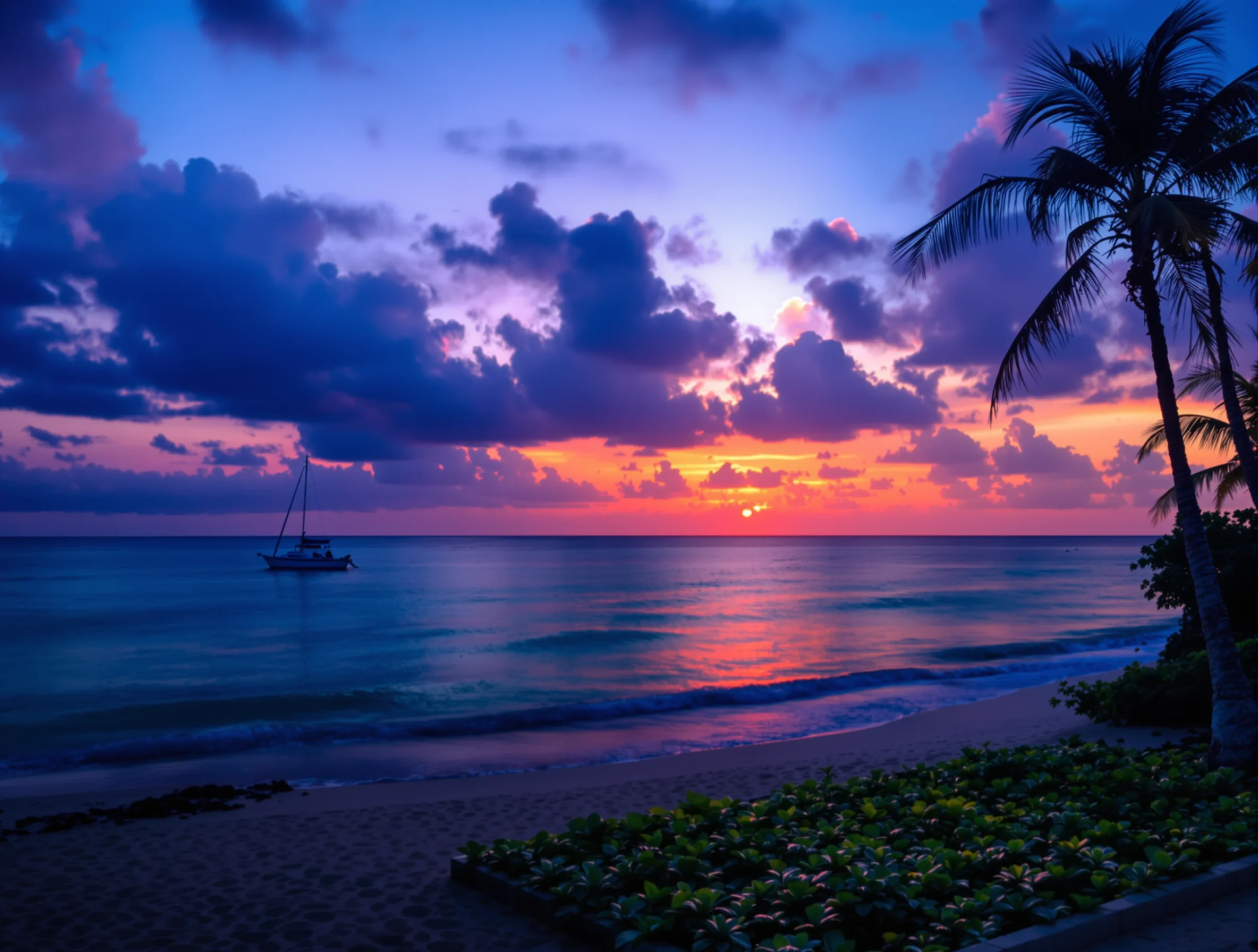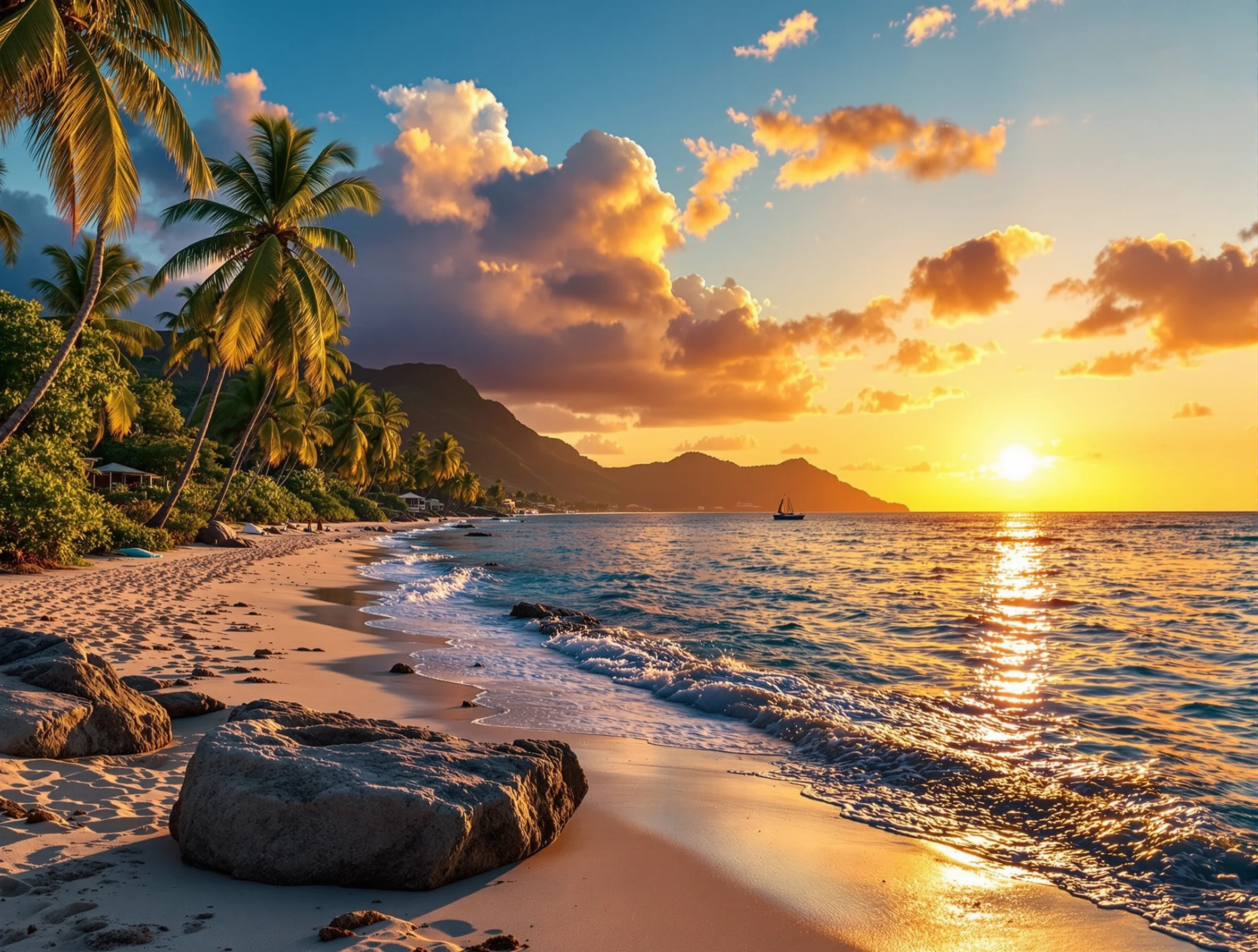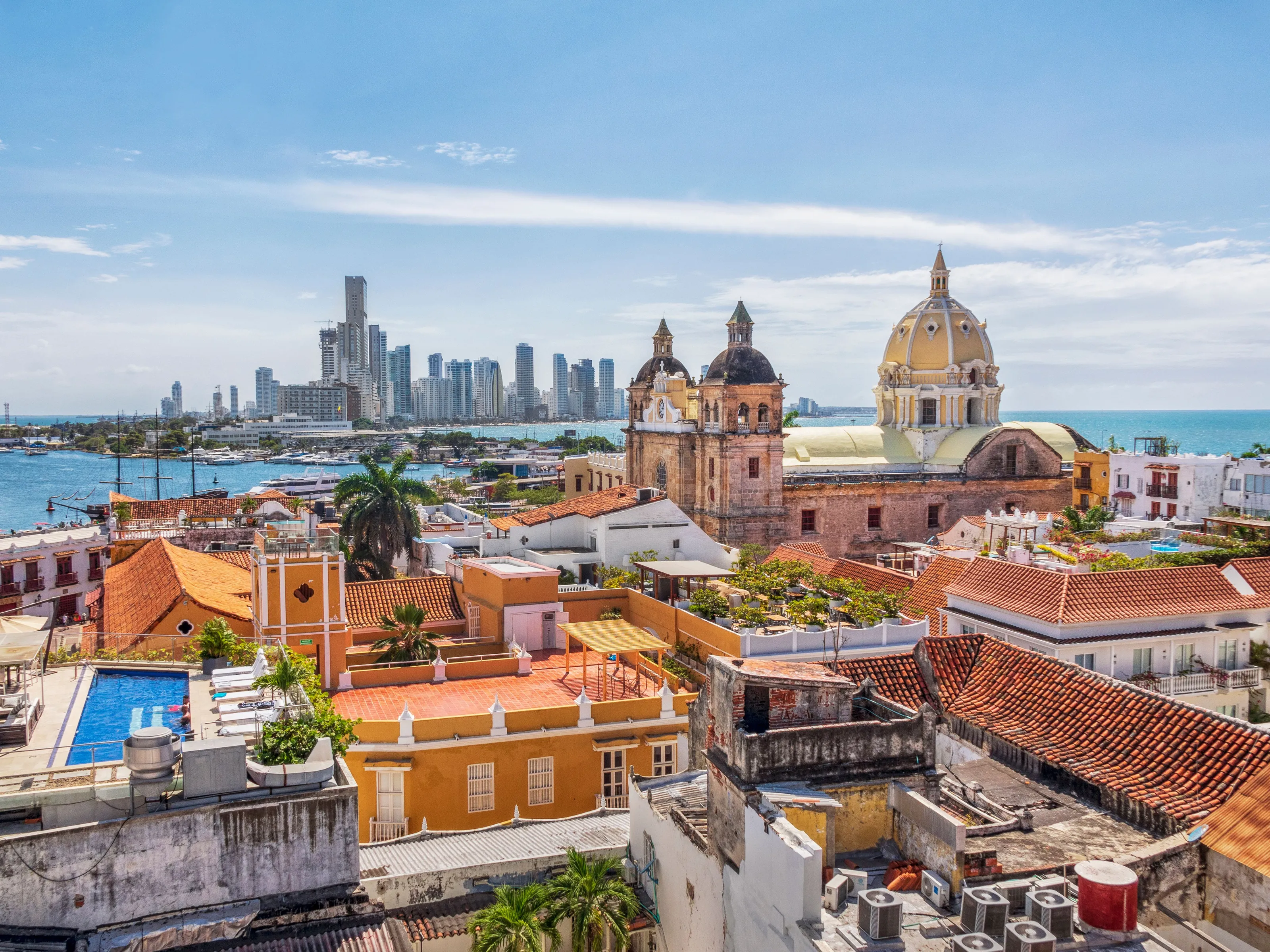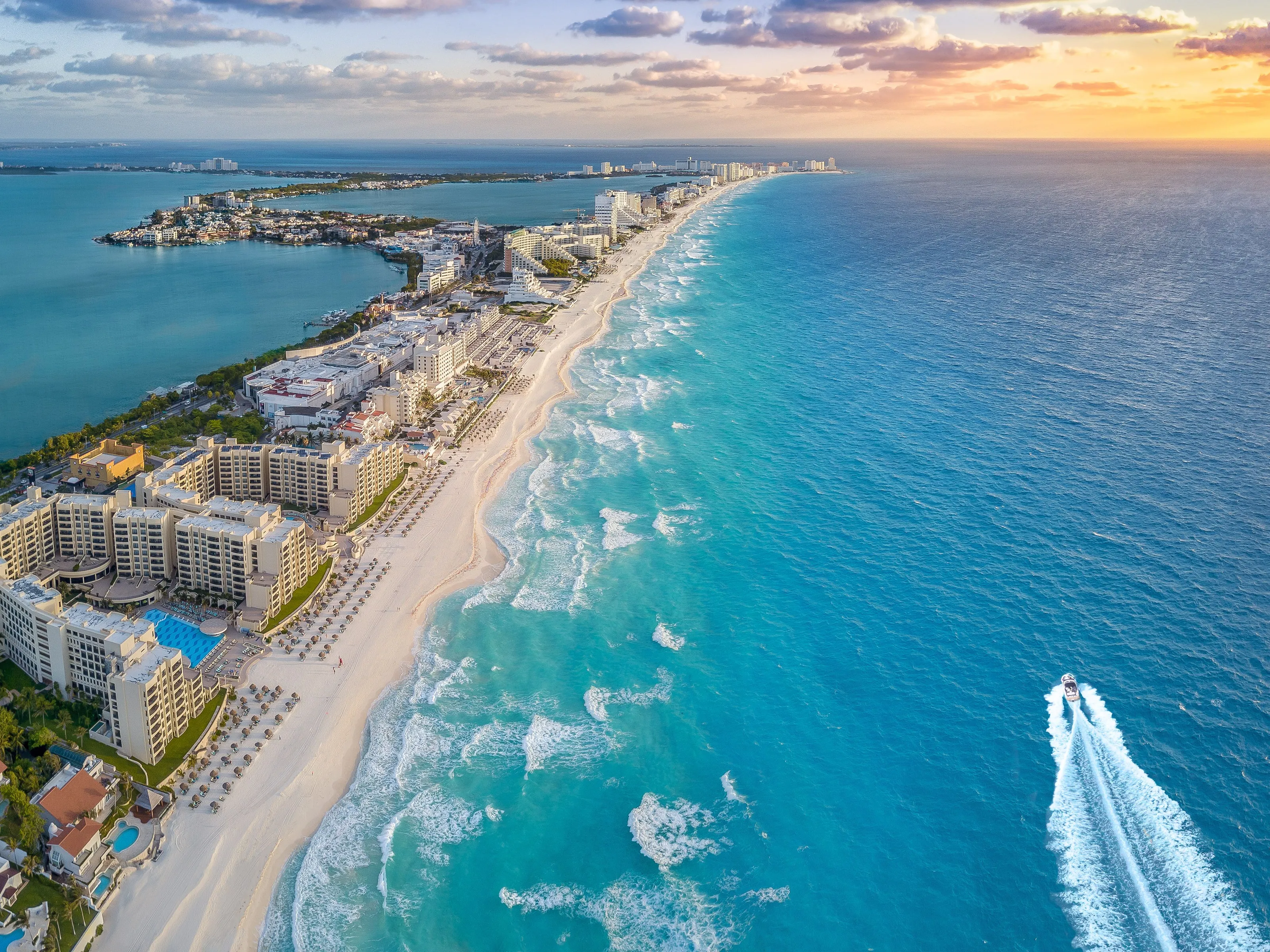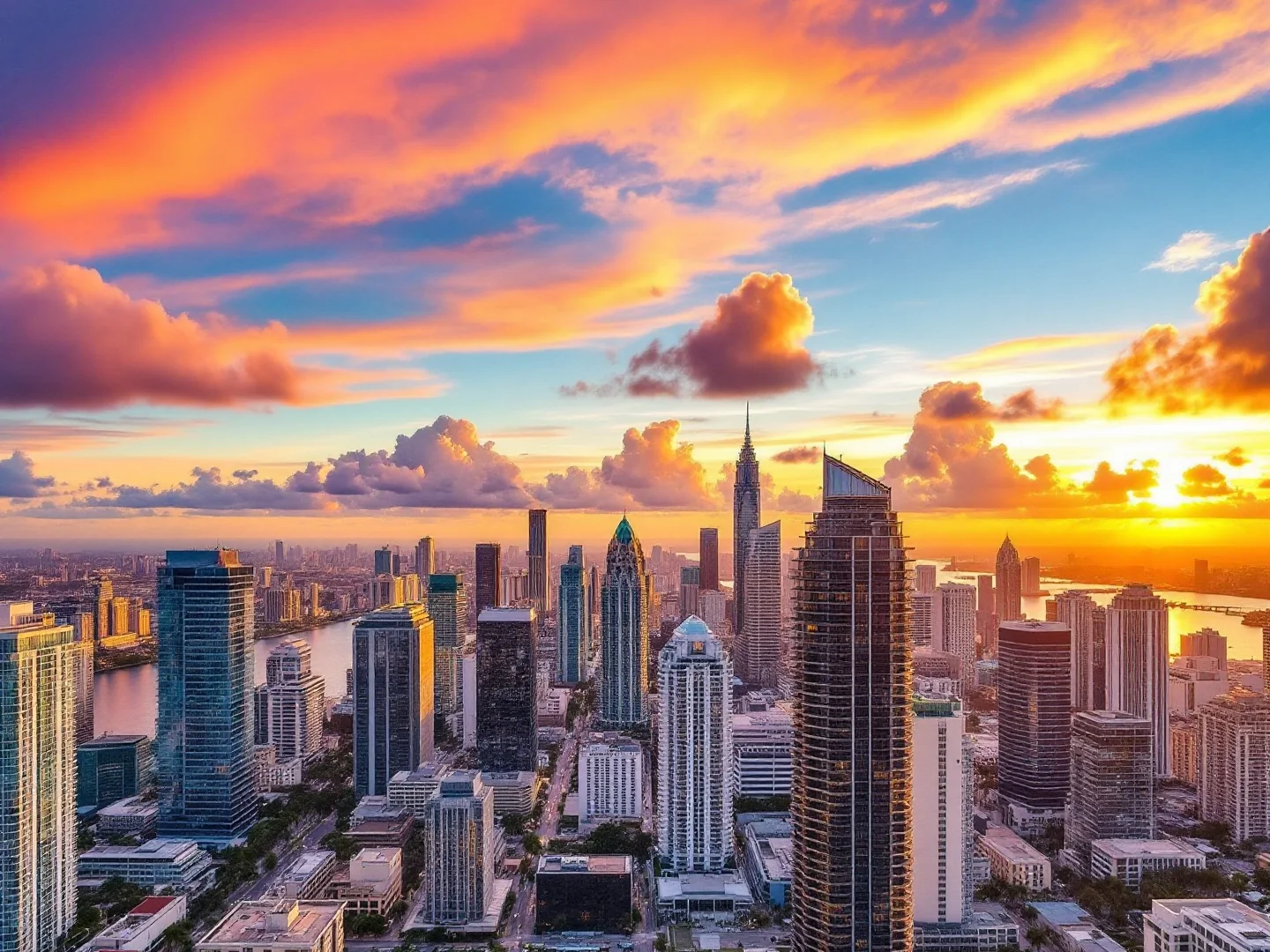Why Visit San Juan?
San Juan enchants as the Caribbean's most historically layered city where 16th-century Spanish colonial walls protect cobblestone streets lined with pastel buildings, massive stone fortresses stand sentinel over turquoise Atlantic waters, and contemporary beach resorts deliver tropical relaxation—all within a US territory offering familiar infrastructure without passport requirements for American travelers. This Puerto Rican capital (city pop. ~340,000, metro ~2.4M) splits into distinct worlds: Old San Juan (Viejo San Juan) preserves 500 years of colonial history within original city walls where every corner reveals architectural gems, art galleries, rum bars, and balconies cascading with bougainvillea; while modern San Juan's beach districts—Condado, Ocean Park, Isla Verde—line golden sands with high-rise hotels, casinos, beach clubs, and nightlife.
The fortresses alone justify the trip: El Morro (Castillo San Felipe del Morro, $10 entry covering both forts, 6-story fort jutting into sea, built 1539-1790, withstood countless attacks, grassy esplanade perfect for kite-flying, sunset views legendary) and San Cristóbal (Castillo San Cristóbal, largest Spanish fort in the Americas, 27 acres, tunnels and ramparts to explore). UNESCO World Heritage status protects these military marvels. Yet Old San Juan's magic lives in wandering: Calle Fortaleza's colorful buildings, La Puerta de San Juan gate, centuries-old churches like Catedral de San Juan Bautista (1521, containing Ponce de León's tomb), Paseo de la Princesa promenade, and endless photo opportunities against blue cobblestones (adoquines shipped as Spanish galleon ballast).
The culture pulses distinctly Puerto Rican—Spanish colonial legacy blended with African rhythms (bomba and plena music), Taíno indigenous heritage, and American modernity. Food scene celebrates this fusion: mofongo (mashed plantains with garlic and pork), alcapurrias (fried fritters), lechón asado (roasted pork), pasteles (tamale-like), and piña coladas invented at Barrachina restaurant. Beaches range from touristy (Condado Beach, Isla Verde) to local (Ocean Park's kitesurfing, Escambrón Beach's snorkeling).
Day trips unlock the island: El Yunque National Forest (45 min east, only tropical rainforest in US National Forest system, waterfalls, hiking trails, free but timed entry reservation required), bioluminescent bays—Laguna Grande in Fajardo (1.5 hours) where microscopic organisms glow blue when disturbed (kayak tours $50–$75), Cueva del Indio's coastal caves, and Bacardí Distillery tours ($15–$45). Adventure activities include ziplining through rainforest canopy, surfing at Rincón (2.5 hours west), snorkeling at Flamenco Beach on Culebra Island (ferry 2.5 hours), and salsa dancing in Santurce's clubs. The post-Hurricane Maria (2017) recovery continues—most tourist infrastructure rebuilt but some areas still show damage.
Weather delivers year-round warmth (26-31°C) with hurricane season June-November bringing storm risk; December-April offers ideal conditions with less rain and comfortable temperatures. Unique advantages for US travelers: no passport needed (US territory), US dollar currency, familiar brands and infrastructure, direct flights from major US cities (2-4 hours from East Coast). Non-US visitors typically need ESTA or US visa.
With vibrant culture balancing history and beach, Spanish colonial architecture rivaling Cartagena, rainforest adventures, and Caribbean beaches all in accessible package, San Juan delivers multifaceted destination—not just resort town but living city where Puerto Rican identity thrives, history resonates in every fortress stone, and the Caribbean spirit meets American convenience.
What to Do
Old San Juan Historic District
El Morro Fort
Iconic 6-story Spanish fortress (Castillo San Felipe del Morro) jutting into the Atlantic—built 1539-1790 to defend San Juan Bay. Entry $10 (covers both El Morro and San Cristóbal, valid 3 days). Explore ramparts, dungeons, cannon batteries, museum exhibits on military history. Grassy esplanade outside perfect for kite-flying (locals gather weekends), sunset views over ocean are legendary. Allow 1-2 hours. UNESCO World Heritage Site. Bring water, hat, sunscreen (full sun exposure). Open 9am-6pm. Walk from Old San Juan 15-20 min or take free trolley. National Park Service operates—America the Beautiful pass accepted. Combine with San Cristóbal for full fort experience. Most photographed site in Puerto Rico.
San Cristóbal Fort
Largest Spanish fort in the Americas (27 acres)—Castillo San Cristóbal defended landside approach to San Juan. Built 1634-1790. Included in $10 fort ticket (with El Morro). Explore five independent units connected by tunnels and dry moats, climb to sentry boxes (garitas) offering city views, learn about defense systems. Less crowded than El Morro. Tunnel tours go underground through historic passages. 1-1.5 hours to explore. Located at entrance to Old San Juan—easy walk from cruise port. Ranger-guided tours available (free, check schedule). Kids love exploring multi-level complex. Combined with El Morro, these forts deliver world-class colonial military architecture.
Old San Juan Streets & Architecture
Wander 500-year-old cobblestone streets lined with pastel colonial buildings—Calle Fortaleza (rainbow umbrellas in summer), Calle del Cristo, Calle San Sebastián (bar-lined, nightlife hub). Blue cobblestones (adoquines) shipped as Spanish ballast. Colorful doorways perfect for photos. Must-sees: Paseo de la Princesa (waterfront promenade, fountains, artisan market weekends), La Puerta de San Juan (massive gate in city walls), Catedral de San Juan Bautista (1521, Ponce de León's tomb), Plaza de Armas (main square), La Fortaleza (Governor's mansion, oldest executive mansion in Americas, exterior only). Free to walk around—just wander and explore. Art galleries, boutiques, rum shops (sample Puerto Rican rum), piragua carts (shaved ice). Old San Juan is walkable (7 blocks by 7 blocks)—wear comfortable shoes on cobblestones. Free trolley runs routes but walking best. Morning (8-10am) peaceful before cruise passengers arrive.
Beaches & Water
Condado Beach & Isla Verde
Main tourist beaches in San Juan—Condado Beach (fronting Condado hotels, golden sand, calm waters, beach clubs, water sports, walkable from Old San Juan 30 min or $8–$12 taxi) and Isla Verde (near airport, wider beach, resorts, families, local vibe on weekends). Both have public access (free), though beach clubs charge for chairs/umbrellas ($20–$40). Swimming safe, water warm year-round. Amenities: restrooms, showers, food kiosks, bars. Condado gets crowded—arrive morning. Ocean Park beach (between them) attracts kitesurfers and LGBTQ+ crowd, more local feel. Atlantic Ocean means some waves and currents—lifeguards on duty. Water sports: jet-ski rentals, paddleboard, kayak. Sunset beach walks. Not pristine Caribbean (that's Culebra), but convenient city beaches.
El Yunque Rainforest
Only tropical rainforest in US National Forest system—45 min east of San Juan. Entry to the forest is currently free and no advance reservation is required (as of April 2025, reservation system suspended); only El Portal visitor center has a small admission fee (~$8). Check current conditions before visiting as policies have changed since Hurricane Maria. Highlights: La Mina Falls (moderate 30-40 min hike down, swimming in pool, uphill return—arrive early, gets crowded), El Yunque Tower (if open, panoramic views but closed periodically), Yokahú Tower (observation tower, easy access). Over 240 tree species, coquí frogs (tiny, loud), tropical birds. Trails range easy to strenuous. Bring: water shoes (river crossings), water, insect repellent, rain jacket (it's a rainforest—afternoon showers common). Road PR-191 gives scenic drive through forest. Allow half-day minimum, full day to hike multiple trails. Tours available from San Juan ($80–$120 with transport and guide) or self-drive (rental car). Hurricane Maria damaged trails—check current closures before visiting.
Bioluminescent Bay (Laguna Grande, Fajardo)
One of world's brightest bioluminescent bays—microscopic dinoflagellates glow blue-green when disturbed by movement. Laguna Grande in Fajardo (1.5 hours from San Juan) is closest to city. Kayak tours ($50–$75 2-3 hours, departures after dark—new moon phase brightest). Paddle through mangrove channels to open lagoon, swirl water to see glow, swim in bioluminescence. Magical experience—hand motions create trails of light. Must be very dark to see (cloudy/new moon best, full moon too bright). Not allowed to wear sunscreen or insect repellent in water (protects microorganisms). Bring: waterproof phone case (hard to photograph—just experience it), change of clothes, open mind. Vieques has brighter bay (Mosquito Bay) but requires flight or ferry. Tours book up—reserve ahead. Rainy season can cancel tours. Unforgettable natural phenomenon.
Culture & Food
Puerto Rican Cuisine
Mofongo (mashed fried plantains with garlic, pork, seafood—signature dish, $12–$18), alcapurrias (fried fritters with meat, $2–$3), lechón asado (roasted pork, best at roadside lechoneras), pasteles (like tamales, $2–$3), tostones (fried plantains), arroz con gandules (rice with pigeon peas), pernil (roasted pork shoulder). Drinks: piña colada (invented at Barrachina in Old San Juan or Caribe Hilton—both claim credit, $8–$12), Medalla beer (local, light), Puerto Rican coffee (strong). Best eats: La Alcapurria Quemá (Old San Juan, alcapurrias), Deaverdura (vegetarian mofongo), El Jibarito (traditional), Casita Miramar (upscale). Street kiosks in Luquillo (30 min east, 50+ food shacks, $5–$10 meals). Try everything—Puerto Rican food is flavorful blend of Spanish, African, Taíno influences.
Rum & Nightlife
Puerto Rico produces world-famous rum—Bacardí Distillery tours in Cataño (ferry from Old San Juan $1 tour $15–$45 tastings included, largest rum distillery). Don Q Distillery another option. Old San Juan bars: La Factoría (craft cocktails, speakeasy vibe, ranked among world's best bars), El Batey (dive bar, locals, cheap drinks), Nuyorican Café (live salsa, bomba, plena music, cover $10–$20). Santurce neighborhood: La Placita (street party Thu-Sun nights, outdoor bars, dancing, locals and tourists). Salsa dancing: take lessons (many venues offer free classes before night starts), then hit the floor. Condado has hotel bars and casinos. San Sebastián Street Festival (January, huge party, music, food)—book ahead if visiting then. Puerto Rican nightlife goes late (11pm onward).
Bomba & Plena (Traditional Music)
Bomba: Afro-Puerto Rican music/dance with drums (barriles), call-and-response, improvisational dance—dancer challenges drummer with movements. Plena: storytelling music with panderos (hand drums), chronicles daily life. See live at: Nuyorican Café (Thursdays bomba night, $10–$15), Santurce's Museo de Arte (sometimes hosts), street performances. Participatory—audience joins dancing. Deeply rooted in Puerto Rico's African heritage. Contrast with salsa (also Puerto Rican but more commercial). Authentic cultural experience beyond tourist resorts. Ask locals where bomba happens—often neighborhood events. Dress to dance and sweat.
Gallery
Travel Information
Getting There
- Airports: SJU
Best Time to Visit
December, January, February, March, April
Climate: Tropical
Budget
Excludes flights
Visa Requirements
Visa-free for EU citizens
💡 🌍 Traveler Tip (November 2025): Plan ahead: December is coming up and offers ideal weather.
Practical Information
Getting There
Luis Muñoz Marín International Airport (SJU) in Isla Verde—well-connected to US mainland (direct flights from most major US cities, 2-4 hours from East Coast) and international destinations. Europe: few direct flights (increasing), usually connect via US gateway. Taxis to Old San Juan $12–$20 (15 min, meters or flat rate), Condado $8–$12 Isla Verde $6–$10 Uber/Lyft available and often cheaper. Rental cars available ($30–$60/day) but unnecessary if staying in San Juan proper. Cruise ships dock in Old San Juan (walking distance to attractions).
Getting Around
Old San Juan is walkable—compact 7x7 block area, free trolley runs three routes (convenient but can be crowded, 7am-7pm). Uber/Lyft operate (cheapest, reliable, $5–$15 most rides within San Juan). Taxis metered or flat rates (negotiate before)—$8–$15 between districts. Public buses (AMA) cheap ($1) but complicated routes. Rental cars useful for El Yunque, beaches outside city, exploring island ($30–$60/day, US license valid, drive on right, tolls use AutoExpreso electronic system or pay cash at booths). Parking in Old San Juan challenging (limited street parking, garages $10–$20/day). Most visitors use Uber/Lyft or walk.
Money & Payments
US Dollar ($, USD). Credit cards accepted everywhere. ATMs abundant. Tipping: 15-20% restaurants (sometimes included as "service charge"—check bill), $1–$2 per drink at bars, $2–$5 per bag for hotel porters, 15-20% taxi/Uber (app includes). Prices US-level—expect $12–$25 meals, $8–$12 cocktails, $100–$250 hotels. More expensive than Dominican Republic or Mexico but familiar pricing for Americans.
Language
Spanish and English are both official languages. Spanish dominates daily life—locals speak Spanish to each other, signs often Spanish-only. English widely spoken in tourist areas (hotels, restaurants, tours). Many Puerto Ricans bilingual. Basic Spanish helpful: gracias (thanks), por favor (please), ¿cuánto cuesta? (how much), la cuenta (the check). Menus often bilingual. Communication generally easy in tourist zones, more challenging in local areas.
Cultural Tips
Puerto Rican culture: warm, welcoming, family-oriented. Blend of Spanish colonial, African, Taíno, and American influences. Not quite American, not quite Caribbean—uniquely Puerto Rican. Respect local pride—don't assume Puerto Ricans want statehood (political status is complex). Dress modestly when visiting churches (cover shoulders). Beach/resort casual acceptable elsewhere. Tipping expected (US-style). Greetings: handshake or kiss on cheek (women/close friends). Punctuality flexible—"island time" exists but tours/restaurants expect timeliness. Hurricane recovery: Maria (2017) devastated island—infrastructure mostly repaired in tourist areas, some damage visible in rural areas. Locals appreciate patient understanding. Music: salsa, reggaeton, bomba, plena everywhere—Puerto Ricans love music and dance. Coquí frogs: tiny, loud, symbolic (El Yunque best place to hear). US territory advantages: no passport for Americans, US dollar, familiar brands (Walgreens, McDonald's), T-Mobile/AT&T work without roaming, USPS delivers mail. Spanish colonial history: forts reflect 400+ years defending against British, Dutch, pirates—immense historical significance. Food culture: eating is social, leisurely, family-centered—meals take time. Plantains everywhere (tostones, amarillos, mofongo). Coffee culture strong (Puerto Rican coffee rivals world's best). Rum: Don Q and Bacardí produced here—sample local before importing. LGBTQ+ friendly: San Juan has visible LGBTQ+ community, especially Ocean Park and Condado areas. Beach etiquette: topless sunbathing illegal, cover-up when leaving beach. Traffic: San Juan can be congested—rush hours 7-9am, 4-7pm. Parking scarce in Old San Juan. El Yunque reservation: must book weeks ahead (recreation.gov)—don't show up without reservation. Hurricane season: June-November requires trip insurance, monitor weather forecasts, Maria's legacy means preparedness essential.
Perfect 4-Day San Juan Itinerary
Day 1: Old San Juan History
Day 2: Beaches & Forts
Day 3: El Yunque Rainforest
Day 4: Bioluminescent Bay or Beach Day
Where to Stay in San Juan
Old San Juan (Viejo San Juan)
Best for: Historic center, colonial architecture, forts, cobblestones, restaurants, walking, culture
Condado
Best for: Beach hotels, resorts, casinos, restaurants, lagoon, walkable, upscale, tourists
Isla Verde
Best for: Beach, near airport, resorts, families, local feel weekends, wider beach than Condado
Ocean Park
Best for: Between Condado and Isla Verde, kitesurfing, LGBTQ+ friendly, guesthouses, relaxed
Santurce
Best for: Local neighborhood, art district, La Placita nightlife, street art, authentic, hip
Frequently Asked Questions
Do I need a visa to visit San Juan?
What is the best time to visit San Juan?
How much does a trip to San Juan cost per day?
Is San Juan safe for tourists?
What are the must-see attractions in San Juan?
Popular Activities
Top-rated tours and experiences in San Juan
Ready to Visit San Juan?
Book your flights, accommodation, and activities

